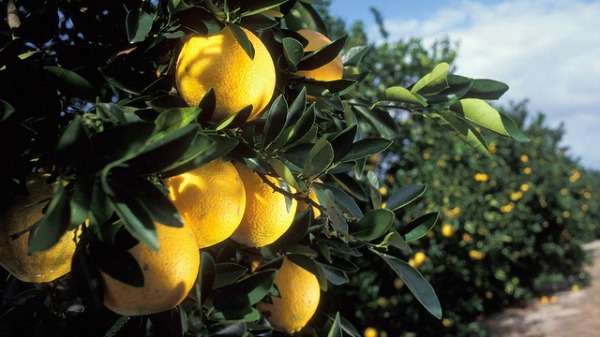Peel research bolsters oranges' thick skin

Several experiments have revealed that pre-harvest factors play an important role in reducing the incidence of creasing (albedo breakdown) in sweet oranges (Citrus sinensis), which has a detrimental impact on local commercial fruit farmers.
Curtin University PhD candidate Zahoor Hussain, together with Horticulture Professor Zora Singh conducted experiments to determine the role that spraying polyamines onto the fruit had in affecting creasing and the best treatment for managing this disorder.
Albedo breakdown is a physiological disorder of the peel in citrus fruits, causing the pith to spilt and crack.
"Albedo breakdown causes separation of albedo tissue between the fruit and results in channel formation and sunken grooves on the fruits skin surface," Prof Singh says.
"When the oranges are packaged the pressure can cause the fruit to rupture."
Consumers are less likely to buy damaged fruit, resulting in the sweet oranges with albedo breakdown receiving a lower quality grade.
"Creasing doesn't affect the nutritional and eating quality of the fruit but from a cosmetics point of view the fruit looks damaged which reduces its grading and consequently marketability and value of the fruit," Prof Singh says.
The researchers found that a variety of factors made sweet oranges more susceptible to creasing including their genotype, climate conditions, rootstock, crop load, rind thickness, irrigation and mineral nutrition.
Different sprays test Gingin oranges
They examined the effect of the polyamine Putrescine (PUT) on Washington Navel and Late Lane sweet oranges, over a two-year period from 2010-2012 on a commercial orchard at Gingin.
The cultivars on the farm were either sprayed with an exogenous solution of Putrescine (PUT) or MGBG. A control group of trees received no spraying.
A single spray of PUT was applied to the cultivars at three different growth stages—fruit set, golf ball stage and just before colour break—to prevent albedo breakdown.
"The research found that creasing may be associated with polyamine biosynthesis within the fruit, and if we sprayed PUT onto the fruit we found it made the rind of the fruit…stronger and improved the quality of the fruit," Prof Singh says.
He says the preliminary findings indicate for the first time that a single spray application of PUT at 500-1000 µM has the potential to decrease the incidence of creasing and improving overall fruit quality.
However, he says they need to conduct further testing with polyamines before they can fully comprehend how to prevent creasing in sweet oranges in order to develop an effective management strategy.
More information: "Involvement of polyamines in creasing of sweet orange [Citrus sinensis (L.) Osbeck] fruit," Scientia Horticulturae, Volume 190, 16 July 2015, Pages 203-210, ISSN 0304-4238, dx.doi.org/10.1016/j.scienta.2015.04.013
Provided by Science Network WA




















